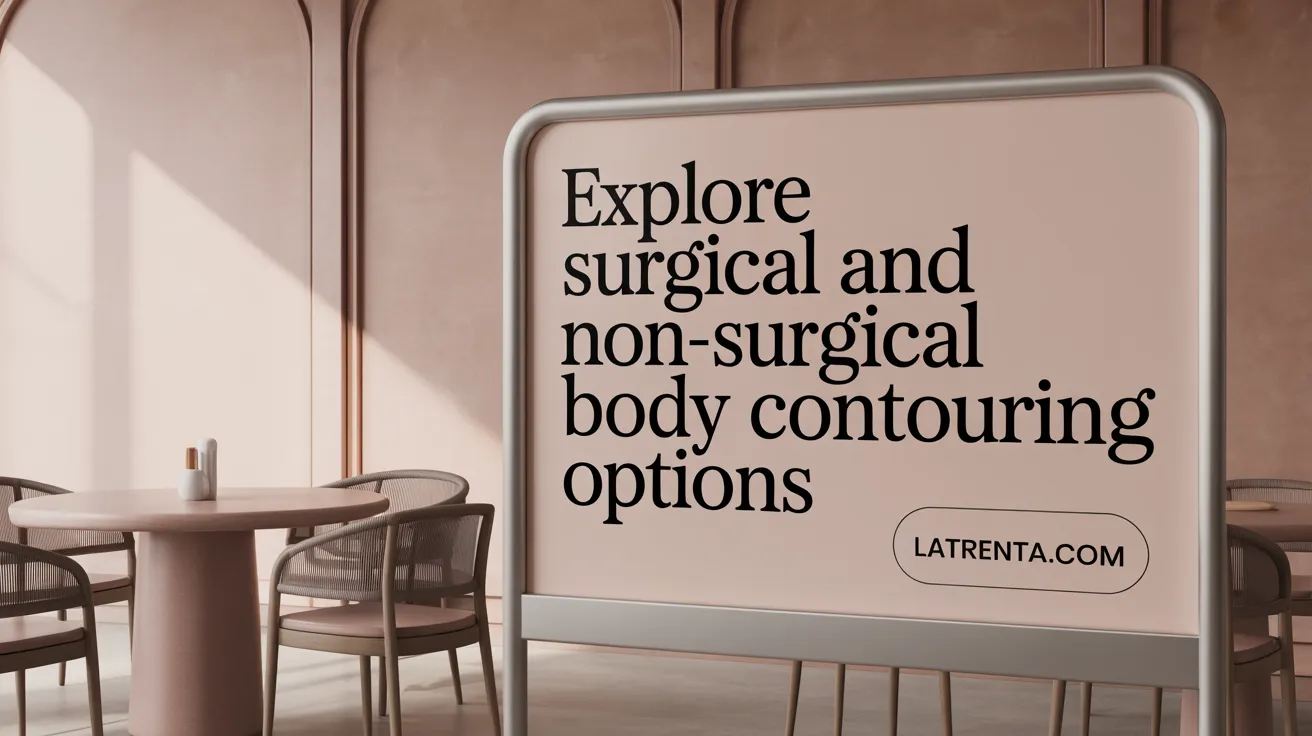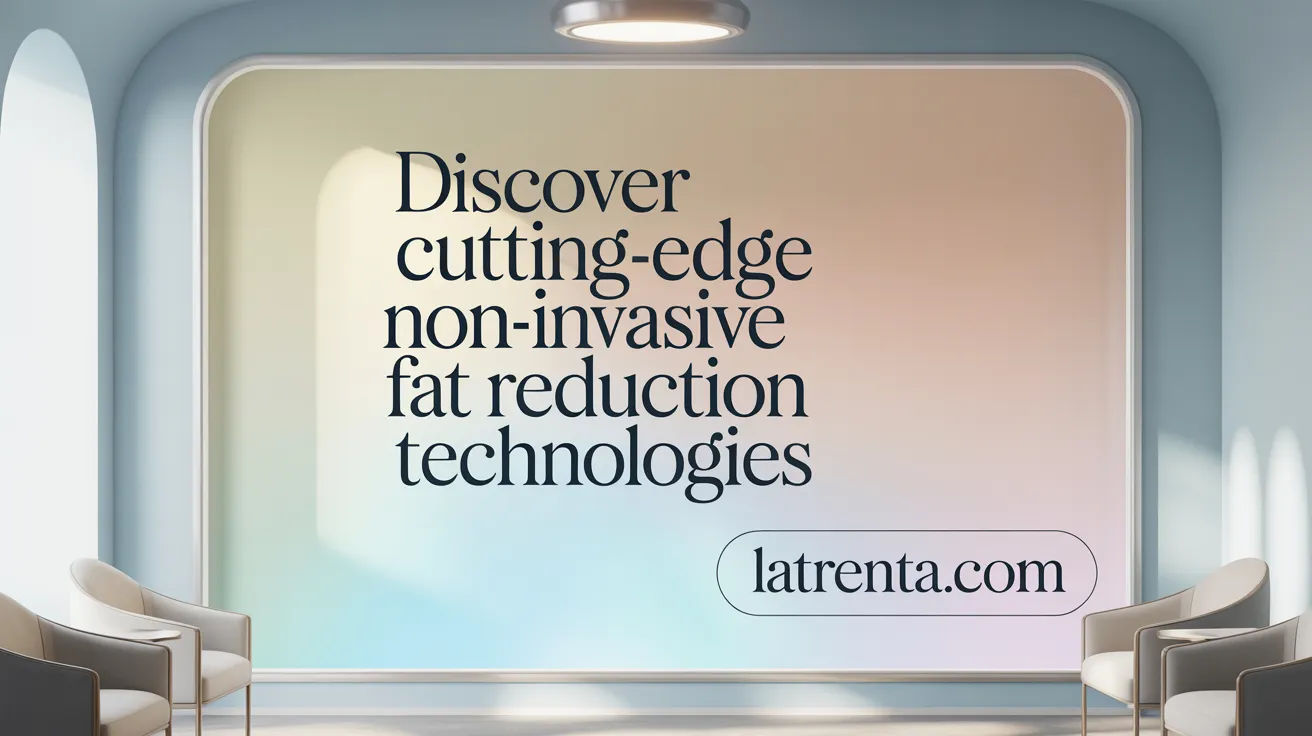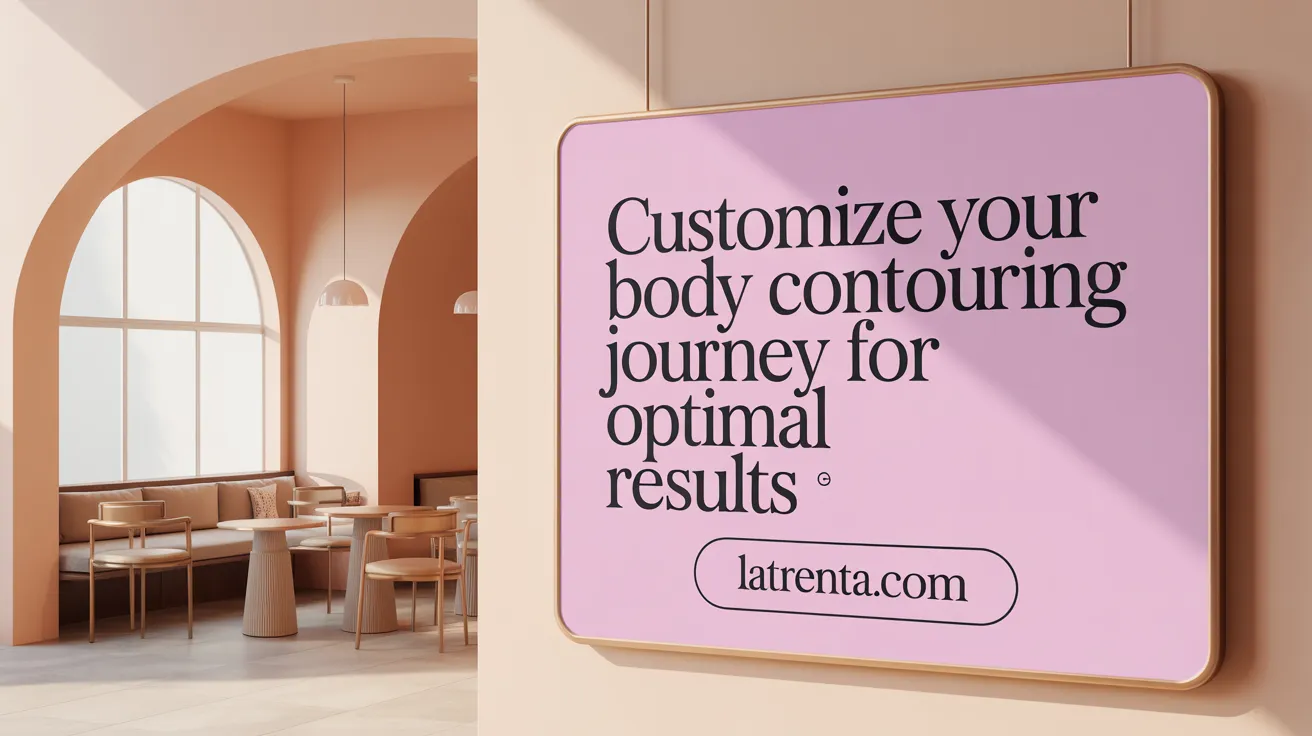Introduction to Modern Body Contouring
Body contouring has evolved into a sophisticated blend of surgical precision and innovative non-invasive technologies aimed at sculpting the body’s silhouette with natural, personalized results. This article explores the latest advancements in body contouring methods, addressing both surgical and non-surgical options, highlighting their benefits, technologies involved, patient suitability, and safety considerations. Whether individuals seek subtle fat reduction or dramatic transformations, modern procedures are tailored to meet diverse needs with minimal downtime and enhanced outcomes.
Understanding Body Contouring: Surgical and Non-Surgical Approaches

What is body contouring and what does it include?
Body contouring refers to procedures designed to reshape or improve the appearance of specific body areas by reducing fat, tightening skin, or removing excess skin. It encompasses surgical methods such as liposuction, lifts, and tucks, as well as non-surgical treatments like cryolipolysis (commonly known as CoolSculpting), injection lipolysis, laser lipolysis, and radiofrequency lipolysis. These procedures address stubborn fat pockets and skin laxity often resistant to diet and exercise.
Surgical body contouring techniques
Surgical body contouring involves medical procedures performed under anesthesia. Typical surgeries include liposuction for fat removal, abdominoplasty (tummy tuck), body lifts, and skin tightening techniques. These require incisions through which fat is removed and excess skin may be trimmed for a more defined silhouette. Recovery time usually spans weeks to months, with patients needing wound care and activity restrictions. While surgical options provide more immediate and pronounced results, they also carry higher risks such as infection, scarring, and longer downtime. Learn more about surgical body contouring procedures.
Non-surgical body contouring methods
Non-surgical techniques use advanced technology to contour the body without incisions or anesthesia. Popular options include CoolSculpting, which freezes fat cells to eliminate them gradually; laser lipolysis, where heat destroys fat cells; radiofrequency and ultrasound therapies that tighten skin and break down fat; and injection lipolysis for targeted fat reduction like the double chin. These treatments typically require little to no downtime and produce gradual improvements over several weeks or months. They are mainly suited for mild to moderate fat reduction and body shaping. For details, see non-surgical fat reduction options.
What are the main differences between surgical and non-surgical body contouring?
Surgical body contouring delivers faster and more dramatic changes but involves invasive procedures with longer recovery periods and increased complication risks. Non-surgical approaches prioritize safety and convenience, offering subtle, progressive enhancements with minimal side effects and downtime. They serve well for patients near their ideal weight seeking to handle localized fat deposits or skin laxity without surgery. Read a detailed comparison at body contouring overview and differences.
Patient evaluation and candidacy
Before treatment, a comprehensive evaluation by a qualified plastic surgeon or cosmetic specialist is essential. This includes reviewing medical history, lifestyle, physical examination, and discussing aesthetic goals. Ideal candidates for non-surgical methods are those with a body mass index under 30 and localized fat resistant to diet and exercise. Surgical candidates often require stable weight and good overall health. Personalized treatment plans ensure safety and optimal outcomes based on individual needs and expectations. For more information on evaluation and candidacy, see patient evaluation for body contouring.
Innovations in Non-Invasive Fat Reduction Technologies

What are the latest technologies in non-invasive body contouring?
Recent advances in non-invasive body contouring have broadened treatment options with FDA-cleared technologies that improve patient outcomes and comfort. Among the leading methods is cryolipolysis (CoolSculpting), which uses controlled cooling to freeze and eliminate fat cells in targeted areas such as the abdomen, flanks, thighs, and chin.
Laser fat reduction (SculpSure) employs controlled heat via laser energy to dismantle fat cells, focusing on the abdomen and flanks. Patients typically see results within 6 to 12 weeks.
Ultrasound fat reduction methods, including UltraShape and Liposonix, utilize high-intensity sound waves to break down fat cell membranes, leading to gradual elimination of fat.
Red light therapy (UltraSlim), a non-invasive, light-based option, encourages fat cell shrinkage without destroying them, with some patients noticing results after just a few treatments.
Injection lipolysis (Kybella) uses deoxycholic acid injections to chemically destroy fat cells, primarily in the submental (double chin) region and requires multiple sessions for effective results.
Cutting-edge combinations of these technologies are also emerging. Multi-technology treatments integrate cryolipolysis, radiofrequency, ultrasound, and magnetic stimulation, often supported by AI-driven treatment planning. This approach allows personalized protocols based on body composition analysis and enhances fat reduction while simultaneously improving skin tightening and muscle tone.
How effective are non-invasive treatments like CoolSculpting and others?
FDA-approved non-surgical fat reduction options have demonstrated moderate efficacy, especially for individuals close to their ideal weight with isolated fat deposits. CoolSculpting typically achieves a 20-25% fat reduction in treated areas per session, with visible improvements developing gradually over 1 to 3 months.
Laser and ultrasound therapies show comparable effectiveness, causing fat cell dismantling that becomes evident within weeks. Red light therapy produces fat cell shrinkage, with some immediate results and sustained improvements when combined with a healthy lifestyle.
Injection lipolysis is effective for smaller, defined areas like the double chin, but requires multiple treatments spaced over time to achieve lasting outcomes.
These non-invasive treatments offer benefits such as minimal downtime, lower risk profiles than surgery, and gradual natural-looking results. Optimal outcomes often arise from combining multiple modalities and adhering to post-treatment healthy habits to maintain results long term.
Muscle Toning and Skin Tightening: Beyond Fat Reduction
What options are available for improving muscle tone and skin tightness in body contouring?
Body contouring extends beyond fat reduction by incorporating advanced technologies that enhance muscle definition and skin firmness.
Magnetic Muscle Stimulation: Devices like CoolTone muscle stimulation and Emsculpt muscle building technology utilize electromagnetic energy to stimulate supramaximal muscle contractions. This process strengthens muscles in targeted areas such as the abdomen, buttocks, and thighs, improving muscle tone and contour. These treatments require no downtime, making them convenient for patients seeking muscle enhancement without surgery.
Radiofrequency Technologies and Microneedling: For skin tightening, radiofrequency (RF) devices play a crucial role. Morpheus8 combines microneedling with RF energy, promoting collagen and elastin production to smooth and tighten skin. Renuvion uses precision helium plasma combined with radiofrequency for effective skin contraction, ideal for post-surgical or standalone treatments.
Ultrasound and Laser Skin Tightening: Ultrasound therapies, including high-intensity focused ultrasound (HIFU), deliver targeted heat to stimulate collagen remodeling and improve skin elasticity. Laser skin tightening systems emit controlled thermal energy to firm loose skin and rejuvenate tissue.
How do holistic and prejuvenation trends influence body contouring?
Modern body contouring increasingly embraces holistic and prejuvenation approaches to maximize and sustain results.
Prejuvenation promotes initiating aesthetic treatments early to maintain youthful skin and body contours, preventing or minimizing aging effects before they become pronounced. This trend is part of the prejuvenation preventative skin care trend.
Holistic Approach integrates wellness factors such as nutrition, supplementation, skincare routines, and healthy lifestyle habits alongside aesthetic procedures. This comprehensive method supports overall skin health, enhances healing, and helps preserve the improvements achieved through body contouring.
Together, these trends highlight the importance of treating the body not just cosmetically but as an interconnected system, resulting in more natural and longer-lasting outcomes.
Personalized Treatment Planning: Tailoring Body Contouring to Individual Needs

How Are Treatment Plans Personalized in Body Contouring?
Personalized treatment plans start with a comprehensive patient evaluation. This includes a detailed consultation to assess medical history, lifestyle, and aesthetic goals. Physical examination and diagnostic tools, such as 3D body scans in contouring and body composition analysis, play an important role in understanding the patient's unique anatomy.
Body contouring specialists consider individual body types — including apple, pear, hourglass, rectangle, and inverted triangle shapes — to target specific areas effectively. By identifying stubborn fat deposits and skin laxity unique to these body types, treatments are customized.Body contouring for different body types provides tailored approaches addressing these needs.
To optimize outcomes, practitioners often combine multiple technologies. For example, cryolipolysis (fat freezing) can be paired with muscle stimulation (like CoolTone muscle stimulation or Emsculpt muscle building technology) and skin tightening modalities (such as radiofrequency or microneedling RF). This multi-faceted approach addresses fat reduction, muscle tone enhancement, and skin elasticity improvement together.
Why Is Choosing a Board-Certified Surgeon Important?
Selecting a board-certified plastic surgeon is critical for ensuring safety and successful results. These surgeons have undergone specialized training and are well-versed in the latest body contouring techniques, both surgical and nonsurgical.
Board certification ensures that providers follow strict professional standards, offer thorough patient evaluations, and provide clear information about possible risks and benefits. Their experience allows them to create individualized, effective treatment plans that align with patients’ goals while minimizing complications.
Moreover, these experts facilitate informed consent and provide comprehensive support throughout preoperative planning and recovery, reinforcing patient confidence and satisfaction.
In summary, personalized body contouring involves detailed evaluation using advanced tools, consideration of body types and goals, combination of complementary technologies, and guidance from experienced, board-certified surgeons to maximize safety and aesthetic outcome.
Safety, Risks, and Recovery in Body Contouring Procedures

What Are the Safety Considerations and Risks Associated with Body Contouring?
Body contouring procedures, whether surgical or non-surgical, carry specific safety concerns. Surgical options such as liposuction or lifts involve risks like bleeding, anesthesia complications, infection, scarring, asymmetry, nerve damage, and possible prolonged recovery. Non-surgical treatments—like cryolipolysis (CoolSculpting), laser lipolysis, or radiofrequency methods—typically have fewer and milder risks. These include temporary redness, swelling, pain, mild rash, or bruising. Rare but more serious complications, such as paradoxical adipose hyperplasia (where fat enlarges instead of reducing), have also been reported in non-surgical fat freezing. Safe patient selection by a qualified provider and adherence to established safety protocols are critical to minimize these risks.
What Does Recovery from Body Contouring Entail?
Surgical recovery can span several weeks to months. It often involves wound care, wearing compression garments to reduce swelling, activity restrictions, and close monitoring for signs of infection or complications. Patients may experience moderate pain and need to gradually resume physical activity under medical guidance. In contrast, non-surgical procedures usually allow patients to return immediately to normal daily activities. Side effects tend to be mild and short-lived. Patients are instructed to watch for unusual symptoms such as excessive pain, prolonged redness, swelling, or signs of infection.
How Are Safety Protocols and Patient Selection Managed?
Thorough evaluation, including medical history review and physical exam, is conducted before any procedure to assess suitability and identify potential risk factors. Patients with stable weight, no significant health issues affecting healing, or contraindications for device use are ideal candidates. Providers use FDA-approved devices with validated safety features and follow recommended treatment guidelines to ensure optimal outcomes.
How Are Side Effects and Complications Managed?
Mild side effects usually resolve without intervention. For more significant complications, prompt medical attention is needed. This may include managing infections, addressing skin irregularities, or treating unexpected tissue responses. Providers educate patients on warning signs and provide clear instructions for follow-up care.
Why Is Follow-Up and Ongoing Care Important?
Post-procedure follow-up appointments enable early detection and treatment of complications, monitoring of healing progress, and guidance on lifestyle measures to maintain results. Ongoing care supports patient satisfaction and long-term safety.
Maintaining a healthy lifestyle post-treatment is emphasized to preserve results since body contouring does not replace weight loss or weight management.
The Role of Lifestyle and Maintenance in Sustaining Results

How important is lifestyle in maintaining body contouring results?
Lifestyle plays a crucial role in preserving the benefits of body contouring procedures. Maintaining a healthy diet coupled with regular exercise helps sustain fat reduction and muscle tone achieved through treatments like CoolSculpting treatment and CoolTone muscle stimulation. Since these procedures are enhancements rather than weight loss solutions, patients must commit to ongoing healthy habits after body sculpting. Adequate hydration and proper skincare further support skin elasticity and overall appearance, preventing premature sagging or dryness that could detract from results.
What should patients expect regarding long-term outcomes?
Patients should have realistic expectations, understanding that non-surgical treatments yield gradual improvements over several weeks to months, while surgical results are more immediate but still require maintenance. Body contouring does not halt future weight gain or the natural effects of aging, making lifestyle choices vital to extend the lifespan of their sculpted physique. Combining different treatments according to personalized body sculpting plans and regular follow-up care enhance both the quality and durability of results.
Healthy diet and exercise
Adopting a balanced diet rich in nutrients and maintaining consistent physical activity helps prevent the return of stubborn fat deposits. Exercise also supports improved muscle tone, complementing muscle stimulation technologies.
Maintaining weight and body composition
Stabilizing weight is essential to keep the reshaped contour intact. Fluctuations in weight can reverse treatment effects or cause uneven fat distribution. Understanding body composition analysis helps monitor and maintain results.
Importance of hydration and skin care
Hydrated skin maintains elasticity which is crucial for the tightened, smooth appearance promoted by body contouring. Using quality moisturizers and protecting skin from sun damage can improve outcomes.
Impact of lifestyle on treatment longevity
Smoking, excessive alcohol consumption, and poor sleep habits negatively affect skin and metabolic health, potentially reducing treatment longevity. Healthy lifestyle choices enhance recovery and sustain results.
Patient education and realistic expectations
Clear communication about treatment capabilities and limitations, alongside encouragement for lifestyle adherence, prepares patients for a satisfying outcome and long-term success. For detailed guidance, refer to patient education on body contouring.
Choosing the Right Body Contouring Provider and Setting
How can patients select a qualified provider for body contouring?
Patients seeking body contouring should prioritize providers who are double board-certified plastic surgeons or certified by recognized cosmetic surgery boards. This certification ensures medical expertise and adherence to high standards.
Reviewing patient testimonials and examining before-and-after photos allows insight into the provider's skill and the natural, personalized results they achieve. It's important that the provider offers a range of surgical and non-surgical options to tailor treatment according to individual goals and body types.
Open and transparent consultations are crucial. Patients should expect detailed discussions about procedure risks, realistic outcomes, and total treatment costs. This transparency helps build trust and informed decision-making.
What should patients consider regarding treatment setting and support?
Body contouring procedures should take place in accredited medical facilities equipped with experienced clinical teams. This environment assures patient safety and compliance with healthcare standards.
Comprehensive care is essential—from the initial consultation through to recovery. Providers offering multidisciplinary support, including preoperative assessments and personalized post-treatment plans, help optimize results and manage potential complications.
Financing options should be clearly communicated, enabling patients to access advanced body contouring treatments without compromising on quality or safety.
Choosing the right provider and setting ensures effective, safe, and satisfying body sculpting experiences.
Conclusion: Embracing Innovation for Your Ideal Silhouette
Advancements in body contouring offer an unprecedented array of options to sculpt and refine the body with tailored approaches combining surgical expertise and cutting-edge non-invasive technologies. Through personalized treatment planning, rigorous safety standards, and a commitment to holistic wellness, patients can achieve natural, lasting results that enhance confidence and quality of life. Selecting experienced, board-certified professionals and maintaining a healthy lifestyle are fundamental to maximizing the benefits of today’s innovative body contouring solutions. Your journey to the perfect silhouette is now more accessible and effective than ever before.
